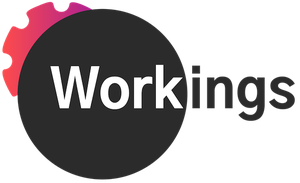The skeptics want me to admit (at least privately) that our real mission at Steyer is making money, and that all this ‘Good Jobs’ stuff is a load of corporate claptrap. I get it! The world is full of companies saying one thing and doing another, companies purporting to have a sense of social responsibility and then optimizing only for profit.
I skew towards skepticism myself, and this is one reason I’m hellbent on designing a Good Jobs graphic that reports out, every six months, exactly how we’re doing.
In the meantime though, at the risk of revealing myself to be a huge dork (“OPs” are operating principles), I also wanted to share this: the PowerPoint slide I wrote for the back-office team in the early days of the pandemic, when we swapped our previous vision—“To be respected for our work”—with what we had come to realize was our true priority: “To secure hundreds of good jobs for creative professionals and related experts.”

On the one hand, dear skeptics, I realize that this proves nothing. It’s a slide: it can be made to say anything. On the other hand, it’s a genuine artifact from a period of deep, team-wide soul searching that gives a glimpse into how we think and talk behind the scenes. Perhaps most notably, the bottom of the slide reveals how we think about financial strength, i.e. as critical—but as a means to an end, not an end in its own right.
More from behind the curtain:
Knowing that we can’t achieve our Good Jobs mission without maintaining our financial health, we are indeed focused on hitting our numbers. That accusation (?) is wholly true! We have ambitious revenue and margin goals for three distinct books of business, and the whole back office gathers every month to review our progress against these targets. The monthly Stats Meeting, as we call it, is one of the few mandatory gatherings we hold, and in these sessions we also review the operational metrics that drive our financial results: how many prospective clients we pinged, how many reqs we brought in, our fill rate, how many proposals we sent out, our win rate, etc. There are (of course!) gorgeous, color-coded bar charts, and—because our kind accountants allowed our Deal Team to name our books of business—our graphs are labeled wacky things like “Wolfpack” and “Honeybadger.” (It’s a long story—write to me and I’ll share it with you.)
So, yes: we focus on financials. Like crazy. Any organization not owned by a billionaire has to. But again: financial strength is not the mission. It’s simply the fuel: the more revenue we bring in, the more people we can employ. The more profitable we become, the better we can make our workplace. We know this to be true, and we’re excited to begin reporting out as soon as we finalize the best format for our Good Jobs graphic. Which brings me to another ask: Are you a data visualization expert? Would you be interested in helping me make our Good Jobs graphic not only easy to understand but also gobsmackingly beautiful? If so, please email me your resume and some work samples, and we can set up a time to talk about a part-time (paid, obviously) project between now and June.
Next time: that emoji debate, as promised. It’ll feature my emoji-eschewing colleague Josh Krenz, and while our conversation is intended as lighter fare, I’ll warn you that we’re both pretty intense about our respective positions on the subject.
Thanks for reading,
Kate
kwalton@steyer.net
Photo by AbsolutVision on Unsplash


 Hello from Steyer, where I was all set to lighten the mood with a freewheeling debate on emoji: are they a force for good or evil?
Hello from Steyer, where I was all set to lighten the mood with a freewheeling debate on emoji: are they a force for good or evil?